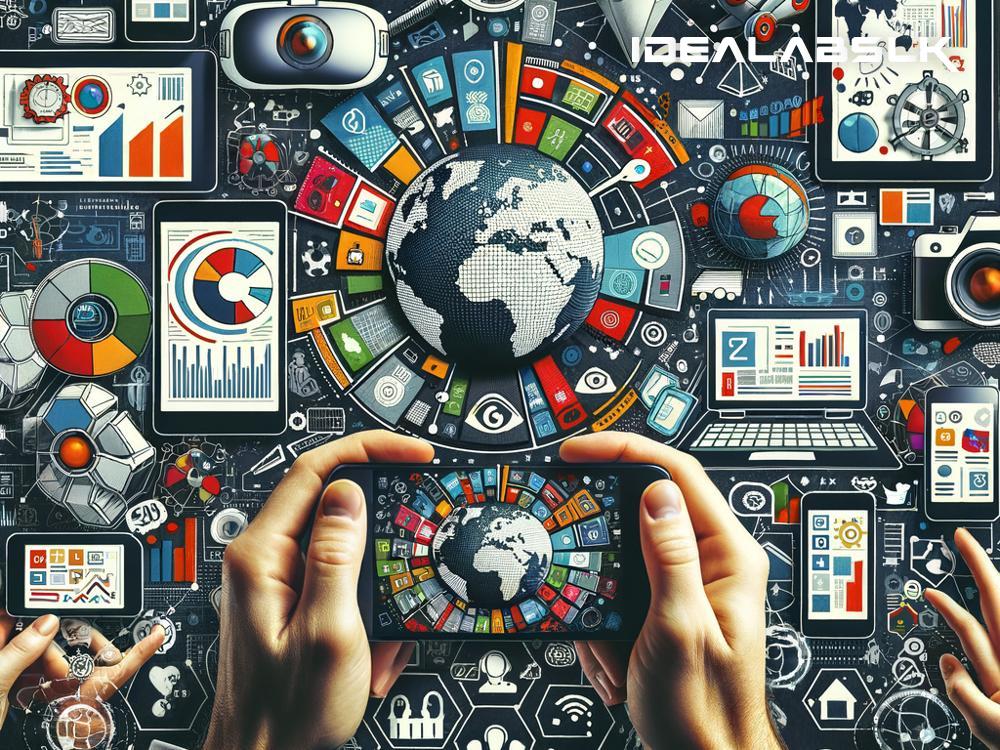The Future of Visual Content in Digital Marketing
In today's fast-paced digital world, grabbing the attention of audiences is more crucial and challenging than ever. Visual content has emerged as a powerful tool in the arsenal of digital marketing, transforming the way brands connect with their customers. As we look towards the future, it's clear that visual content will not only continue to be a key player but also evolve in exciting ways. So, what can we expect from the future of visual content in digital marketing? Let’s dive in.
The Rise of Interactive and Immersive Experiences
The future of visual content is not just about looking at pictures or watching videos. It’s about interacting and immersing oneself in experiences. Virtual Reality (VR) and Augmented Reality (AR) are at the forefront of this revolution. Imagine trying on clothes virtually before buying them online or visualizing how a new piece of furniture would look in your living room before making a purchase. This isn’t a distant dream; it's becoming the norm. Brands are increasingly using AR and VR to create immersive experiences, making shopping more engaging and personalized.
The Power of Personalization
As we move forward, visual content will become more personalized. Thanks to advancements in Artificial Intelligence (AI) and machine learning, brands can now understand their audiences better and tailor their visual content accordingly. For instance, AI can analyze a user’s past behavior and preferences to display the most relevant ads or products. This level of personalization not only enhances the user experience but also significantly boosts engagement and conversion rates.
Short-Form Video Content Will Continue to Dominate
Short-form videos, thanks to platforms like TikTok and Instagram Reels, have seen an astronomical rise in popularity. They are quick, engaging, and easy to consume, aligning perfectly with the decreasing attention spans of online audiences. In the future, short-form videos will continue to dominate the landscape of visual content in digital marketing. Brands will get more creative, using short videos to tell their stories, showcase products, or share user-generated content.
The Growing Importance of Authenticity
In a world saturated with content, authenticity becomes the key to standing out. Audiences are increasingly seeking genuine, real-life experiences over polished, perfect images and videos. This shift calls for a more candid approach to visual content. Real-life testimonials, behind-the-scenes glimpses, and honest product demonstrations will gain more traction, helping brands build trust and foster deeper connections with their audiences.
Sustainability and Social Responsibility
As global climate concerns continue to rise, audiences are becoming more environmentally conscious and expecting the same from brands. The future of visual content in digital marketing will see a greater emphasis on sustainability and social responsibility. Visual narratives will highlight eco-friendly practices, green products, and social initiatives, helping brands resonate with like-minded consumers and demonstrate their commitment to making a positive impact.
Maximization of User-Generated Content (UGC)
User-generated content is not a new concept, but its importance will only grow in the future. UGC, which includes photos, videos, and reviews created by users, lends authenticity and relatability to brands. Encouraging customers to share their own experiences and integrating this content into marketing strategies not only fosters community but also serves as powerful social proof. As we move forward, leveraging UGC will become an essential element of visual content strategies.
The Integration of AI in Visual Content Creation
AI is set to play a big role in the creation of visual content. From generating personalized images and videos to automating content creation, AI technologies will make it easier for brands to produce compelling and relevant visual content at scale. While human creativity will always be vital, AI will streamline the process, ensuring content is more aligned with audience preferences and trends.
Conclusion
The future of visual content in digital marketing is vibrant, dynamic, and full of possibilities. As technology continues to advance, the way we create and consume visual content will evolve, offering unprecedented opportunities for engagement and interaction. By embracing these trends and staying ahead of the curve, brands can create meaningful connections with their audiences, ultimately driving success in the digital landscape. The key is to remain adaptable, authentic, and always focused on delivering value through your visual content.

